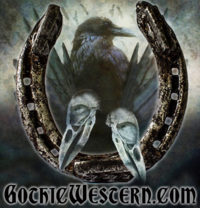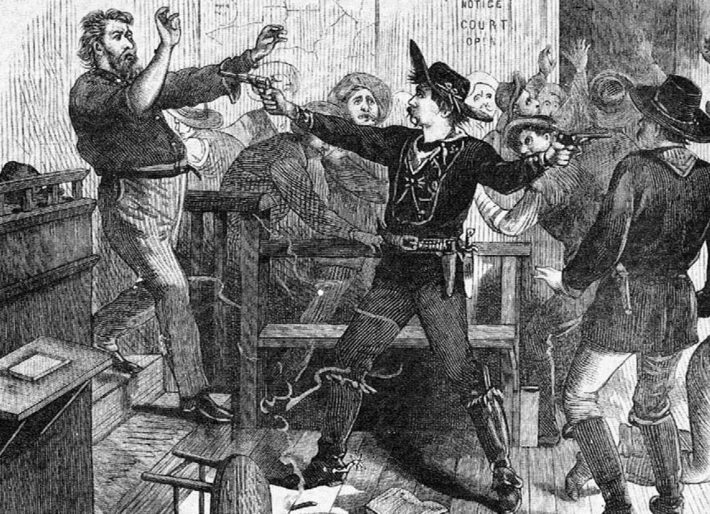One of the most daring robberies and attempts to murder ever recorded in the annals of crime in San Francisco, was one which was committed on Commercial Street, between Montgomery and Kearney, on the afternoon of the 17th day of August 1864. It culminated in the death of an Old West villain.
March 26, 1870, Stars And Stripes, Auburn, California – At half past 2 o’clock, at a time when people were constantly passing to and fro along the street named, the pawn establishment of Mr. Meyers was entered by an individual who knocked down H. Meyers, aged 18 years, son of the proprietor, and then helped himself to watches, diamonds and jewelry of the value of several thousand dollars, after which he made his escape.
For a long time the police worked assiduously to endeavor to discover who the perpetrator was. A gentleman who had arrived from Los Angeles was noticed wearing a singular piece of jewelry which the officers thought looked very much like part of the property stolen from Meyers’ store, and upon questioning him, ascertained that he had purchased it from a man in Los Angeles. The piece of jewelry was identified by Meyers as his property.
The officers obtained the assistance of the military, and the man for whom they were searching was arrested near Fort Prescott, Arizona. At the time of his arrest he had with him a carpet sack in which there was a quantity of jewelry.
The prisoner was a tall, raw-boned individual named John Kelly. He was a native of Indiana and aged about 30 years. He had come to California with the notorious Fourteenth Regiment of the U. S. Infantry.
One dark night the prisoner broke out of the guardhouse, and, before the sentinel could hail him, Kelly leaped from the bluff into the abyss below. The prisoner, it was supposed, had been crushed to pieces on the rocks as he fell, but when day broke and search was instituted for what the searchers expected to find – the dear, mutilated body – no trace of it could be found; so it became evident that Kelly had not sustained serious injury, and he had made good his escape.

Kelly was next heard of in Santa Rita Mine, Arizona, where he was engaged as a blacksmith. For some time he worked at his trade, but he quarreled with the superintendent of the mine, Grosvener, and tired to stab him, for which he was discharged.
From there he went to Tubac, where he killed a man with whom he had quarreled, and as the sympathies of the citizens were with the murdered man, Kelly thought it necessary to have that part of the country to escape lynch law. From that place he went to Chihuahua, near which city he murdered his traveling companion for his money.
Several months ago he brutally murdered a family of four persons near El Paso Del Norte, for the sake of a few dollars. Kelly, who had acquired the name of the “Arizonan Ruffian,” was arrested by some men of the city named who wreaked their vengeance on him.
They carried him into the woods some distance from the city, where they tied-one end of a rope to the limb of a tree, and to the other end tied Kelly by the heels, so that his head hung within a few feet from the ground. They then built a slow fire under him, and allowed him to remain suspended until death put an end to his existence.
According to an article on the subject in The Phoenix Weekly Arizonian, although the Old West villain who committed the initial robbery may have been Kelly, the man tracked from Santa Rita Mine and eventually killed was a man named Burch. They close their statement with the advice, “The San Francisco police had, therefore, better resume the hunt for Kelly.”



